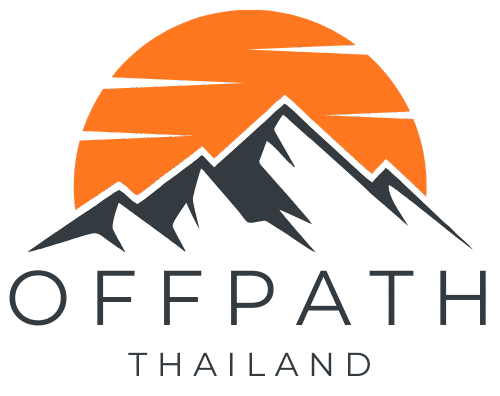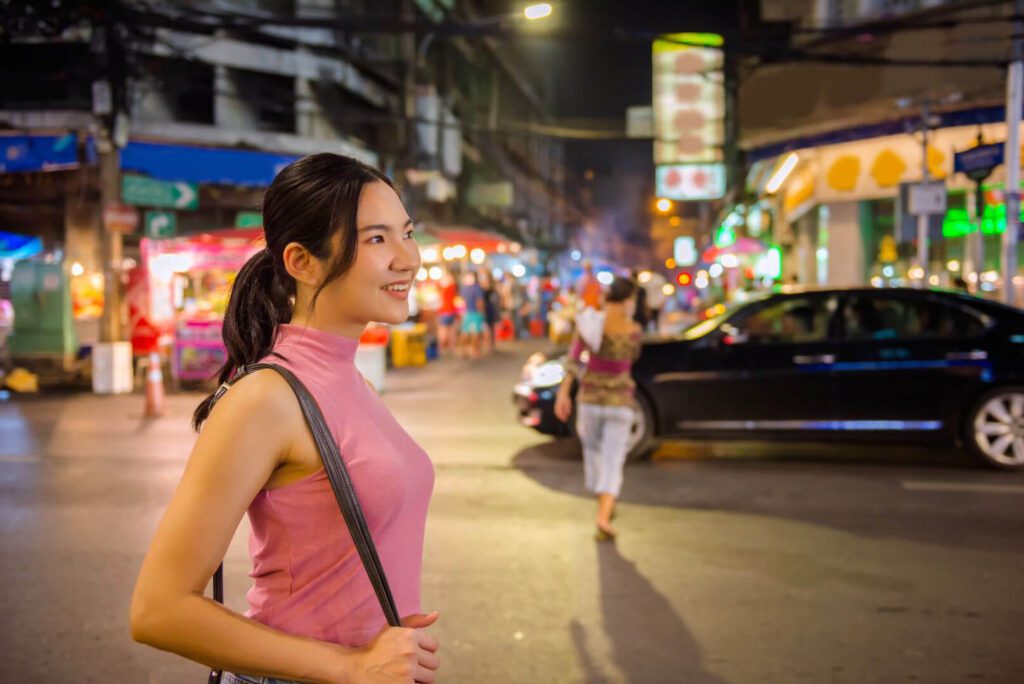
Bangkok Hidden Gems DL from a Local
Bangkok hidden gems 2026 — my local guide to the city’s real culture: canal life, green escapes, hidden markets, and peaceful parks.
If you’re ready to go truly off the beaten path Bangkok, and discover hidden gems in Bangkok for 2026, here’s how I’d explore the city with you.
Also explore Thailand’s Hidden Gems Guide — a complete look at off-path destinations across the country.
Most people land in Bangkok chasing the hottest night clubs, rooftop bars, pool parties, tuk-tuk rides, and shopping binges. And yes, those are exciting — but if I really cared about you, I’d tell you the real Bangkok hidden gems lie elsewhere.
I was born here, second-generation Thai, and the Bangkok I love is a lot quieter, sometimes a little more chaotic, but a lot more interesting and stimulating than if you were to stick to a typical two-week itinerary.
Bangkok’s soul lies in the alleys and waterways, the neighborhood parks, the hidden local markets in Bangkok, these are the real Bangkok Hidden Gems where people still flip second-hand radios, or the back canals where the boats move faster than a car ever could in the city. It’s where cultures overlap peacefully, without anyone trying to package it for tours.
This guide is my way of unveiling to you the Bangkok hidden gems I keep coming back to whenever I am in my hometown. Not the TikTok or Instagram stuff, but the places I’d actually take a friend who wants a real feel of the city. We’ll bike through the city’s green lung, hop canal boats like locals, explore overlooked and unique neighborhoods around Wat Arun, wander lesser-known but spectacular markets and recoup in parks that could be top tier in any country and most travelers never notice.
If you’re ready to go truly off the beaten path Bangkok, and discover hidden gems in Bangkok here’s how I’d explore the city with you in 2026.
Bangkok Hidden Gems 2026: The Green Lung of Bang Krachao
Whenever the city feels too heavy, I take the 5-minute ferry across the river to Bang Krachao. It’s called Bangkok’s “Green Lung,” and the nickname makes sense the moment you arrive. Skyscrapers vanish into the distance, and suddenly you’re pedaling along mangroves, banana plantations, and ponds alive with dragonflies and monitor lizards.
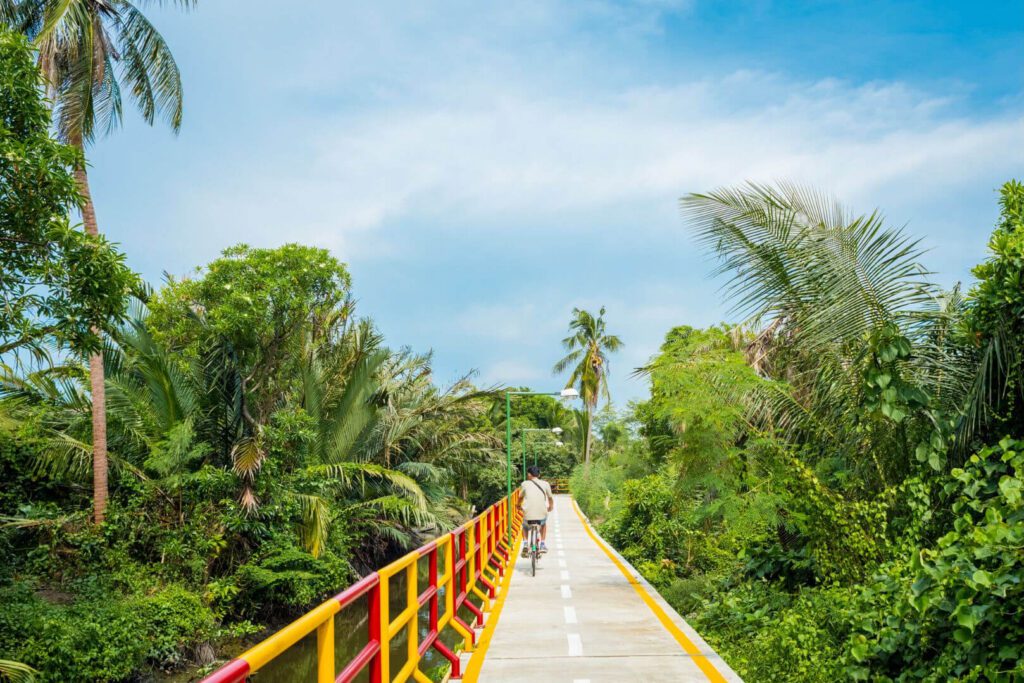
I usually rent a bicycle right at the pier to make things easier. The paths narrow, sometimes only wide enough for one bicycle at a time; talk about sustainable travel Bangkok has to offer. There’s this calm that you feel when you’ve just left Sukhumvit behind. I always say, “nature is a part of us as we are a part of nature,” there’s a familiarity when we go into nature, in any country! Every so often, you pass a mom and pop shop or a home café — places serving Thai style iced tea with veggies grown nearby, or lemongrass drinks made from plants I’ve literally just cycled past.
On weekends, there’s a floating market where locals sell fruit straight from their gardens. Foot massages go for 150 baht, people tend to be more smiley, and it does truly feel like you’ve gone off the grid even though you’re literally just a few kilometers from Bangkok City. For me, it’s not just an escape — it’s a reset, bringing positivity back to the city.
I’ve always thought the best way to spend a day here is to mix cycling with short breaks. Stop at a pavilion shaded by giant trees, sip some coconut water, let the minerals hydrate you. If I were designing a bike tour of Bangkok, this would be definitely included: boat crossing, bikes, a family-style feast in someone’s backyard, and maybe a foot massage to end the day. I especially enjoy and recommend cycling inside Sri Nakhon Khuean Khan Park, where there are nice little trails, serene lakes, and clean air that feels like a world away from the city. You come back feeling positive in a way the city could never give you.
Map of Bangkrajao island (Bangkok’s Green Lung)
Canal Communities & Neighborhoods: Living Culture and The Authentic Bangkok Experience
Another side of Bangkok I love showing people is the Bangkok Muslim community tucked along the Saen Saep Canals. These aren’t tourist attractions — they’re working communities, but they’re some of the most welcoming corners of the city with their own unique food and culture.
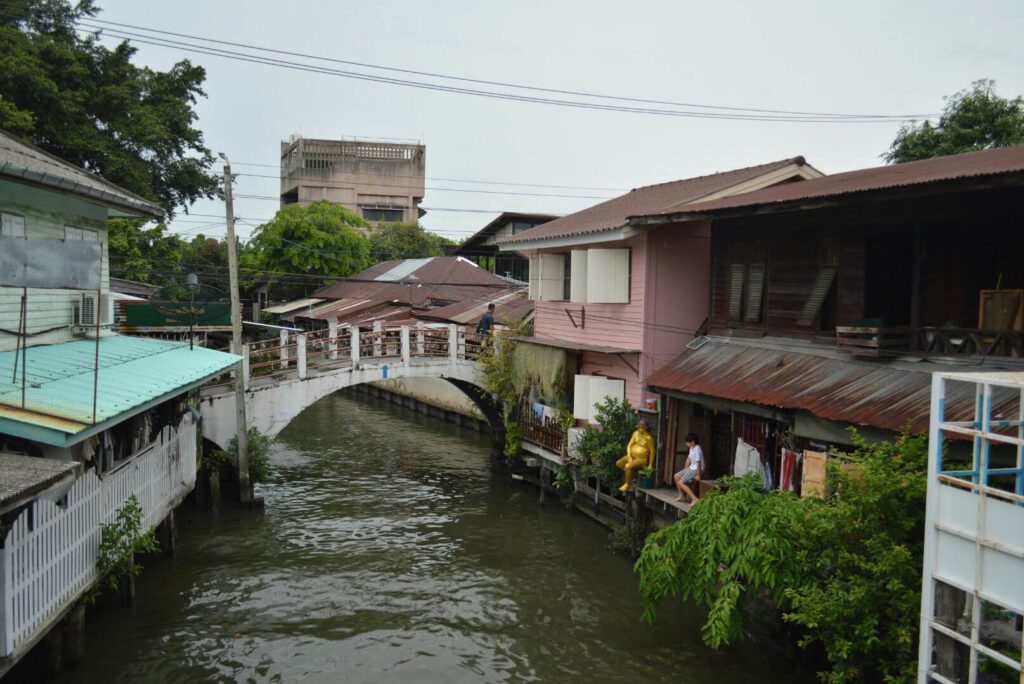
The canal itself stretches from Pratunam, right through downtown Asoke, and keeps flowing east until it reaches the more predominantly Muslim neighborhoods around Ramkhamhaeng. Riding the boat here connects you to a part of the city most travelers never see or even hear of — the fastest and most cost-efficient way to get to where you need to go!
The food is a massive part of it, fragrant biryanis, smoky beef satay, fresh roti flipped on hot pans. Makes it challenging for me to remain vegan! But what really sticks with me is the routine of life here. The calmness of the canal (khlong) water a few moments after the longtail boat has dropped off passengers, mixing with the sound of mosque prayers. Friendly smiles wave as you pass, locals shout greetings. It is authentic, but never on TripAdvisor.
I usually explore by boat, bicycle, or on foot, weaving through narrow sois where mosques sit next to noodle shops and fruit stalls. You start to see how diverse Bangkok’s identity really is — Muslim, Buddhist, Thai, Malay, Indian, Chinese — all living harmoniously side by side.
These neighborhoods never advertise themselves, which is why I think of them as true hidden gems of Bangkok. Spend a morning here, sip on hot milk tea, chat with a shop owner, let yourself wander without worrying about a map application. It’s one of the most authentic Bangkok experiences you can have in my humble opinion.
Map of local communties by the Saen Sap canal near Ramkamhaeng Rd.
Chao Phraya River: Layers of Faith and Community
Most visitors come to the west bank of the Chao Phraya River just to take a picture of Wat Arun and say that they have been there. And of course, it’s very special. But what I go for is the neighborhood around it. Stay a little longer and explore, treasures start to emerge.
In the vicinity you’ll find real history, centuries-old Buddhist temples where you might be the only outsider, a 16th-century Catholic church built by Portuguese traders, Holy Rosary Church (Kalawar Church), and authentic Chinese shrines hidden in the alleyways. None of them are world-famous, but together they tell a story about how culturally rich and diverse Bangkok has always been.
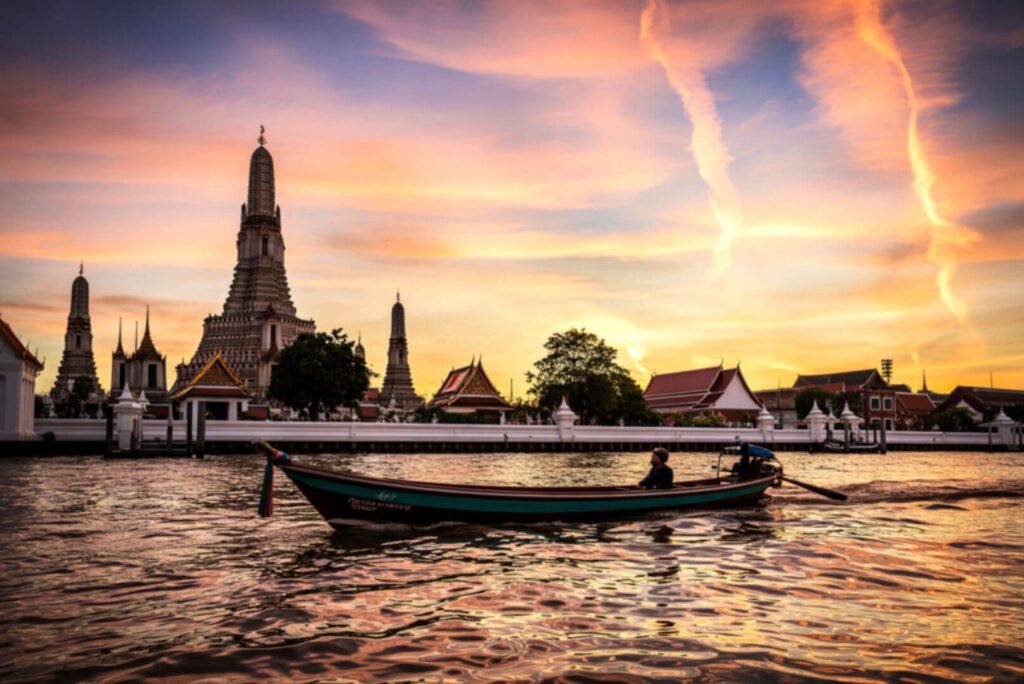
I usually take my time. Pick up an iced lemon tea from a local stall, stroll along the river. The air feels different — people actually seem to know their neighbors, kids and dogs play by the water, monks move gracefully between temples as they always have.
Historically, this area was home to waves of migrants as Chao Phraya River connects to the sea, Portuguese traders, Chinese settlers, Mon families, Muslim communities. You still get their influence in the food, and the architecture.
If you want to see the real cultural layering of Bangkok, don’t stop at Wat Arun’s gates. Take your time with the back streets. Step into the smaller temples or peek inside a riverside Portuguese church. It’s all still here!
Map of the Chao Phraya River in Bangkok
Experience Saen Saep Canal: Cruise through the Heart of the City
The Chao Phraya gets all the attention, but I recommend discovering the canal that goes right through the city center, assisting thousands in commuting daily. As mentioned earlier when discussing Canal Communities, I recommend Saen Saep Canal.
It’s chaotic, noisy, sometimes smelly — but also has a life of its own.
For just twenty baht, you can hop a riverboat and cross half the city faster than any taxi could take you. Office workers in pressed shirts, students with backpacks, aunties hauling bags of vegetables — everyone piles in. It’s not glamorous, but it’s efficient and it screams out Bangkok!

I love the small rituals: hopping on quickly, watching the spray of water hit the tarp as we speed past tilted wooden houses and shrines under bridges. This is what mass transit can also look like when a city grows around its waterways.
What I like most is the sense of history. Saen Saep has been a transport artery since the 1800s, carrying soldiers, goods, and now commuters. Unlike the polished tourist boats, this one has been upgraded but hasn’t been reinvented for show. It’s just part of Bangkok’s everyday livelihood. This is the real culture Bangkok has to offer.
If you want an authentic Bangkok, take this ride. It’s not glamourous in the conventional sense, but it’s legit — and that’s why I keep recommending it. Of course, for a more pleasant journey do avoid rush hour!
Map of the pier next to the famous Pratunam area where you can hop on and off Canal Boats
Best Parks in Bangkok: Lumpini, Benjakitti, and My Off-Path Park Picks
Lumpini Park
Lumpini is an old favorite. In the mornings, I’ve seen retirees practicing tai chi, joggers looping around the lake, and vendors setting up with steaming bowls of rice porridge at the gates. I’ve had mornings here where I just meditated and sometimes sat watching giant monitor lizards laze by the water — they look intimidating, but trust me, they’re more harmless than people.
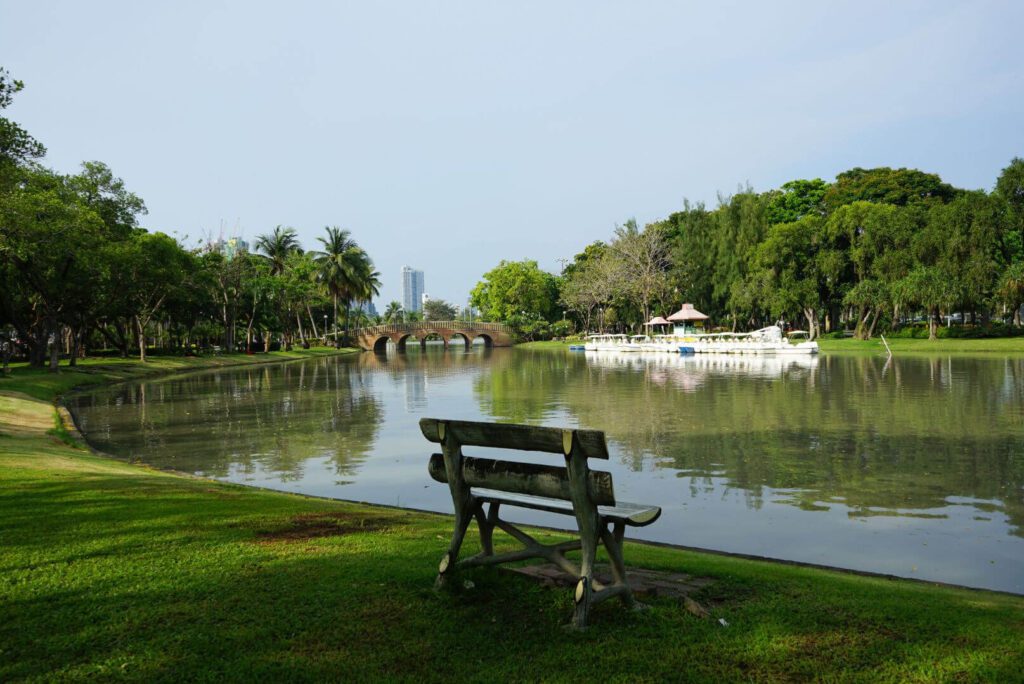
Benjakitti Park
Benjakitti is new, modern, and feels designed for workouts. There are basketball, pickleball, and badminton courts. The cycling and jogging track loops around wetlands where birds gather and lotus flowers grow. I like going at sunset, when the Sukhumvit skyline glows behind you.
Nawamin Park
Nawamin Park has this long, open stretch where you really feel like you’ve left the city behind. The lake is long, the air is calmer, and it’s one of the few places I actually slow down enough to just sit by the water without a phone.
Chatuchak Park Bangkok
Then there’s Chatuchak Park Bangkok. Most people only know the market next door, but the park itself is overlooked on weekdays. Walk inside and it feels surprisingly natural — shaded, green, almost wild in parts. It’s not fashioned the way Benjakitti is, which makes it feel closer to nature.
For me, this mix is perfect. Lumpini and Benjakitti are where I go when I want activity and people-watching. Nawamin and Chatuchak Park Bangkok are where I go when I want quiet and a dose of green that feels more authentic. Together, they show a side of Bangkok most visitors don’t expect.
Map of our four favourite parks in Bangkok (two hidden gems)
Hidden Markets: Beyond Chatuchak and Chinatown
Bangkok is a city of markets, but the ones I love most aren’t the obvious ones. Everyone knows Chatuchak Weekend Market and Chinatown’s Yaowarat Road. They’re fun, but if you look a little to the side, you’ll find something even cooler.
Near Saphan Khwai BTS, just a ten-minute walk from Chatuchak, there’s an antique second-hand market. It’s gritty, messy, and fascinating. I’ve seen everything from vintage cassette players and vinyl records to spare motorcycle parts and analog cameras from the 80s. It’s the kind of place where you can lose hours bargaining over things you never even planned to buy.
In Chinatown, step away from the main strip and head into Sampheng Market Bangkok. It’s a wholesale hub, full of bags, jewelry, snacks, and textiles crammed into narrow alleys. Walking here feels authentic, like the Bangkok I grew up in — shopkeepers measure cloth by hand, scooters run errands between stalls, and the air is thick with food smells. Pro tip: Head there around 9am — it’s still cool, and you’ll catch the market buzzing at its peak.
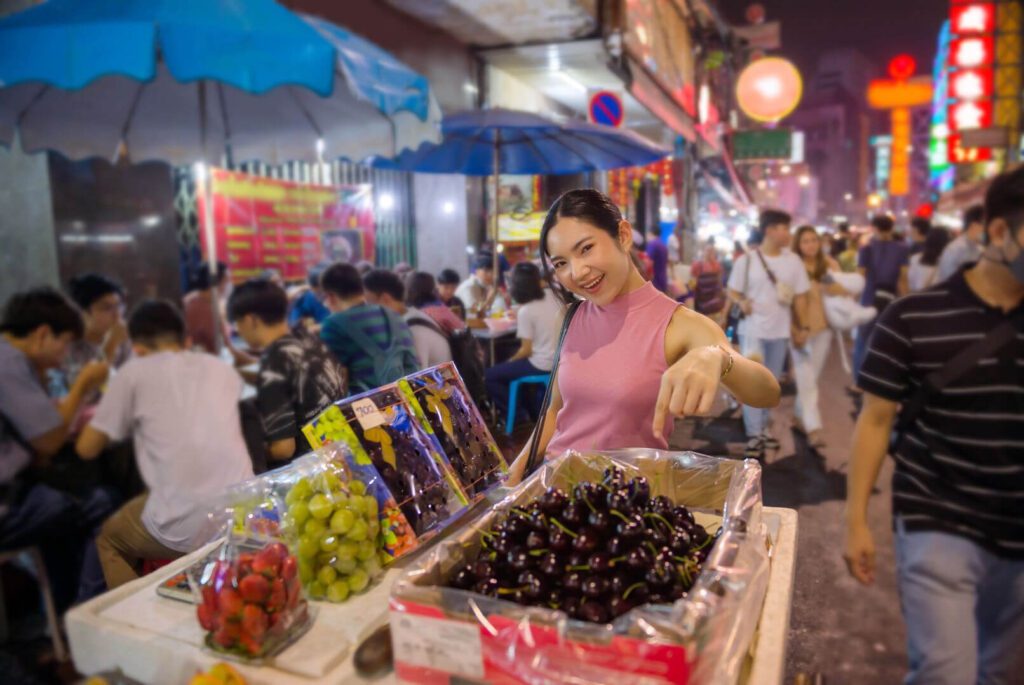
What I love about both markets is that they’re still built for locals, not tourists. That means the prices are legit, the energy is real, and the interactions are genuine. They’re the kind of hidden markets Bangkok keeps alive, showing the city’s market culture in its true form.
Map of Hidden Markets in Bangkok: Sampheng Market & Saphan Kwai Market (next to Chatuchak)
Planning Your Off-Path Bangkok Adventure (and Day Trips)
If you’re inspired to go a little off-grid in Bangkok, a few tips will help. Or if you’d rather not figure it out yourself, you can always book private tours in Bangkok — I design them around these hidden gems so you don’t waste time.
Transport: Use the BTS, MRT, and riverboats as much as you can. They’re cheaper and faster than taxis, and you’ll actually see the city move.
Timing: Start early. Parks, markets, and canals all feel most alive before noon, when it gets hot and sticky.
Food: Don’t stick to what you know. Try the Biryani in the Muslim neighborhoods, herbal teas in Bang Krachao, or Bao Buns in Sampheng.
Respect: In smaller temples and Muslim areas, dress modestly and inquire before taking photos. A little courtesy goes a long way.
Flexibility: Don’t plan every detail. The best finds are often what you stumble into while wandering.
The Bangkok I know isn’t about ticking sights off a list — it’s about how you move through it. Go slower, look away from crowds, but still take time to talk to people. That’s when the real local culture of Bangkok comes to life. This is why many travelers ask me to create a custom Bangkok itinerary or join as their private guide in Bangkok — so they can see this side of the city without missing a beat.
Whether you’re visiting for the first time or returning in 2026, Bangkok’s hidden gems still have countless surprises waiting to be explored.
When you’re ready to go beyond the city, explore Northern Thailand’s Hidden Gems or discover Thailand’s secret islands — perfect next chapters to your Bangkok journey.
This is the city I know and love — whenever you’re ready, let’s go off the beaten path and explore Bangkok’s hidden gems together, or even take one of our private day trips from Bangkok to see more.
Sustainable Travel Tips
Sustainable travel in Bangkok is about slowing down in a city that rarely does. Explore on foot or by boat instead of taxis, visit floating markets that still serve local communities, and support heritage cafés and craft studios tucked away in the old quarters. Choose small, Thai-run guesthouses or eco-certified hotels that invest back into the neighborhoods you explore. Every mindful choice helps preserve the authentic rhythm of Bangkok beyond the malls and high-rises.
Learn more about our philosophy on responsible travel on our Sustainable Tourism page.
FAQ
What are some Bangkok hidden gems for food lovers?
Bangkok has countless local-only food pockets beyond the usual restaurants. Talad Noi’s third-generation vendors serve old-school dishes along narrow alleys, while Sampeng Lane offers morning snacks and Chinese-Thai sweets in tiny bustling passageways. At night, Sukhumvit 38 and W District still deliver authentic street flavours, and the Srinakarin Train Market remains one of the best places for grilled seafood and regional dishes without the tour groups.
Where can I find peaceful Bangkok hidden gems away from malls?
Wat Prayoon in Thonburi offers calm spaces, shaded pathways, and a turtle pond where visitors can feed the turtles with small packets from the entrance. For wider green escapes, Bang Krachao’s cycling paths, Phutthamonthon’s vast gardens, the Rose Garden’s riverside cultural grounds, and the Bang Pu recreational area all provide quiet, open-air environments that feel far removed from the city. These peaceful corners of Bangkok are ideal for slow travel and gentle half-day breaks from urban life.
Are there Bangkok hidden gems for art and history?
The Bangkokian Museum in Bangrak preserves two 1930s Thai-Chinese homes with original furniture and personal artefacts. For additional intimate cultural stops, the Thailand Creative & Design Centre (TCDC) and the Museum of Floral Culture offer beautifully curated exhibitions that most visitors overlook. Weekday visits allow space to explore quietly.
How do I explore Bangkok hidden gems sustainably?
Cycling the Khlong Toei greenway at dawn is one of the most sustainable ways to explore hidden Bangkok. Pair this with BTS Skytrain or MRT day passes, which reduce traffic impact and make it easy to reach quieter neighbourhoods. Electric tuk-tuks and eco-friendly rideshare services are perfect for short trips between canals, temples, and markets. These choices help keep Bangkok’s hidden corners calm, clean, and enjoyable for both travellers and locals.
Tell us your dates and vibe — we’ll build it in 24 hours.
Ready for a trip that actually feels like yours?
Every journey leaves a footprint — the difference is in how we choose to travel. At Off Path Thailand, we focus on keeping those footprints light. Discover how sustainable travel in Thailand connects comfort with care.
